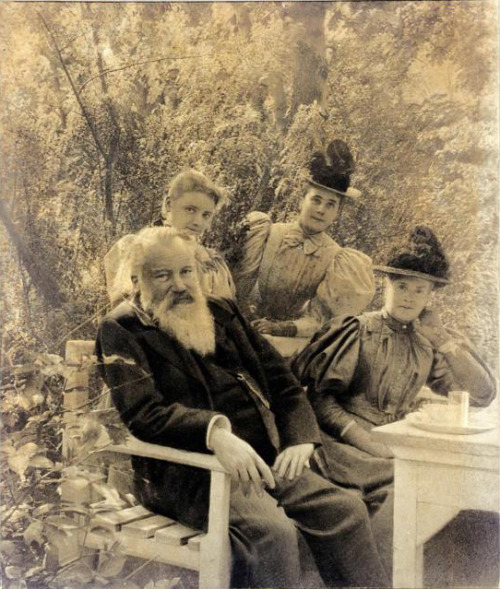The piece was written quite quickly during the summer of 1877. While Brahms had struggled for nearly two decades to complete his first symphony, his sunny, happy, second symphony was written within just a few months while he was on summer holiday in the quaint Austrian resort town of Pörtschach am Wörthersee.
The entire symphony is based upon a three-note motive first stated in the ‘cellos and basses in the very first bar of the piece (D-C#-D). You will hear this motive again and again throughout the entire work; it is almost like one of those “where’s Waldo?” puzzles. As you listen see if you can catch it in all of Brahms’ different settings, inversions, and changes of instrumentation.
The first movement captures the beauty of summer by the lake. After playing through the piece for the first time, one of Brahms’ colleagues wrote: “It is all rippling streams, blue sky, sunshine, and cool green shadows. How beautiful it must be at Pörtschach.”
The second movement is a little darker and brooding in texture. It is thoughtful and reflective, and in the middle becomes more dramatic as it spins out the melody in triplets before returning to its opening theme. The third movement is light and has the character of a serenade. It is interrupted twice by an impatient musical motive that makes you want to tap your feet and dance a little.
The Finale is joyous and exciting. The ‘cello and bass parts are extremely difficult to play well (and tend to show up on all audition lists). The rich second melody makes us remember all those wonderful folk tunes that one often hears in the countryside. And, of course, if you listen carefully you will hear the first movement’s three-note motive moving in and out of the melodies. Brahms ends the piece triumphantly with a brilliant fanfare flourish of trumpets and horns.
—Diane Wittry
Video performance by the Symphonie Orchester des Bayerischen Rundfunks
Conducted by Mariss Jansons
https://youtu.be/OHUDavQsc90
Symphony No. 2 in D Major
Op. 73
Composed in 1877
By Johannes Brahms






